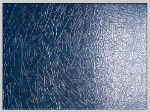



Cracking or Rippling
Description of problem:
Cracks show in one of the ground coats.
Causes:
Note:
Preventive measures:
Note:
It is wise to make a test on a small surface before painting. If cracking occurs, it is best to apply GenPox isolating primer over the entire surface.
Remedy:
Cracks show in one of the ground coats.
Causes:
- Difference in solubility between paint films due to the aging and hardening of the surface.
- A ground coat which has been force-dried at elevated temperatures before polishing and application of the final coat.
- Sandwiching a synthetic product such as synthetic primers between 2 coats of nitro-cellulose paint.
- Excessive delay before applying the second coat of a synthetic paint (the 1st coat has begun to dry).
- Using an “incorrect” isolating primer instead of removing the old paint.
- Strong solvents in the top coat attacking a synthetic primer that has been applied very thick with minimal or no flash off times between coats.
Note:
- The application of thick wet coats of synthetic paint increases the chances of cracking.
- The difference in flexibility between 2 types of finishes whereby the 1st coat is more flexible than the 2nd one usually leads to cracking.
Preventive measures:
- Sand the original paint very well before painting (in some cases isolate or remove old paint).
- Make sure that the temperature of the surface to be painted is the same as the ambient temperature.
- Avoid thick coats.
- Never sandwich a synthetic product between 2 NC coats.
- Perform solvent test.
- Ensure sufficient drying.
Note:
It is wise to make a test on a small surface before painting. If cracking occurs, it is best to apply GenPox isolating primer over the entire surface.
Remedy:
- In extreme cases, sand all the way through to the bare metal, clean with Valox and respray.
- In minor cases, especially with T.P.A (Thermoplastic Acrylics) you may sand with P1200 and polish.

PAINTING DEFECTS
© 2024HyMax



